Partners
Integrative approaches in Structural Biology and cryo-Microscopy

This thematic network is composed by groups that belong to the Center for Structural Biology of MERCOSUR (CeBEM), new groups from other Latin-American (LA) countries, as well as groups from the Iberian Peninsula that are members of the European Consortium Instruct-ERIC. Instruct-ERIC provides to structural biologists access to research infrastructure, equipment and services in centres of excellences in Europe.
This consortium has defined cooperation with other countries outside the EU as a strategic goal and established recently a bilateral agreement/memorandum of understanding (MoU) with CeBEM and to support access to research groups of LA, thus promoting a mutual enrichment through a more active scientific exchange between Europe and Latin-America. The possibility of data collection in cryoEM Infrastructures in Brazil (LNNano) and in Europe will be particularly relevant for structural biologists and explore the great potential of this technique causing huge impact on their health related research and improve their competitiveness.

Partners
Instituto de Tecnologia Química e Biológica, Universidade Nova de Lisboa ITQB NOVA, Oeiras, Portugal http://www.itqb.unl.pt/
Margarida Archer, archer@itqb.unl.pt (Coordinator)

Margarida Archer is Principal Investigator at Instituto de Tecnologia Química e Biológica António Xavier (ITQB NOVA), Universidade Nova de Lisboa, and is the head of Membrane Protein Crystallography Group. The group uses an integrative structural biology approach that includes X-ray Crystallography, more recently single particle cryo- electron microscopy, combined with molecular biology, biochemical a nd biophysical methods to investigate the structure and function of proteins and complexes.
On-going projects include membrane proteins involved in bacterial cell wall synthesis and metabolism; complexes of human antigens with viral particles, and enzymes (e.g. proteases, β-lactamase, polynucleotide phosphorylase) which are potential targets for drug design.
Instituto de Física de São Carlos, Universidade de São Paulo, FSC/USP, São Paulo, Brazil https://www2.ifsc.usp.br/
Richard C. Garratt richard@ifsc.usp.br
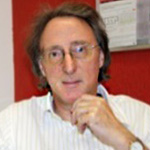
Richard Garrat is a full professor of Instituto de Física de São Carlos, Universidade de São Paulo. He has experience in the field of Structural Biology, using techniques of protein crystallography and molecular modeling. His areas of expertise currently include septins, superoxide dismutases and their chaperones, salvation pathways of purines in parasites, development of vaccines based on protein structure, protein engineering and the development of support tools for structural biology teaching.
Institut Pasteur de Montevideo, IP Montevideo, Uruguay http://pasteur.uy/
Alejandro Buschiazzo, alebus@pasteur.edu.uy
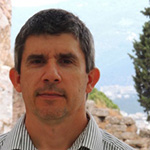
Alejandro Buschiazzo is an Associate Professor, head of the Laboratory of Molecular & Structural Microbiology at the Institut Pasteur de Montevideo, Uruguay.
The Buschiazzo lab wants to understand at the molecular level how microorganisms carry on important biological processes, focusing on vital functions such as signal sensing and transduction, and the subsequent cell regulation that allows cells to adapt and maintain homeostasis. Experimental approaches combine molecular microbiology with structural biology and biochemistry. Structural Biology is leading to protein engineering, one of the current challenges is to develop vaccines against the infectious diseases caused by the microbial agents under study.
Laboratório Nacional de Nanotecnologia, Centro Nacional de Pesquisa em Energia e Materiais, LNNano-CNPEM, Campinas-SP, Brazil, http://lnnano.cnpem.br/
Rodrigo Villares Portugal rodrigo.portugal@lnnano.cnpem.br
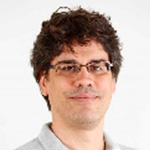
Rodrigo Villares Portugal is the Coordinator Researcher of Cryo-Electron Microscopy Laboratory, at Brazilian Nanotechnology National Laboratory – Laboratório Nacional de Nanotecnologia (LNNano), Centro Nacional de Pesquisa em Energia e Materiais (CNPEM) – located in Campinas, São Paulo. The cryo-EM laboratory operates as an open facility providing access to infrastructure and training for its users. He has experience in methods development for single particle cryo-EM, being involved in several cryo-EM projects, ranging from material sciences to structural biology, over the last years.
Universidad de Costa Rica, UCR, San José, Costa Rica, https://www.ucr.ac.cr/
Alice Perez alice.perez@ucr.ac.cr
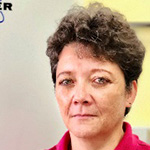
Alice L. Perez has a bachelor degree in Chemistry from the University of Costa Rica, UCR and a Ph.D. in Organic Chemistry from Simon Fraser University, British Columbia, Canada. She is a Professor of Chemistry, School of Chemistry, and a researcher at Natural Products Research Centre, CIPRONA at the University of Costa Rica (UCR). Her area of research is the synthesis of organic compounds and the study of their biological activity, especially those compounds with antiparasitic (Chagas,malaria and Leishmania), antimicrobial, anticancer activity and more recently anti-viral (Zika and dengue). Her research group focuses on the development of new synthetic methodologies under the principles of Green Chemistry. Also She has experience in the isolation and analysis of natural products using various spectroscopic techniques. She has been the director of CIPRONA, director of the Doctoral Program in Science and Vice President of Research at UCR..
Instituto Venezolano de Investigaciones Cientificas , IVIC, Caracas, Venezuela http://www.ivic.gob.ve/
Raúl Padrón raul.padron@gmail.com
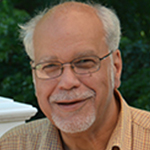
Padrón is Emeritus Investigator at Center of Structural Biology, Venezuelan Institute for Scientific Research (IVIC). Using cryo-electron microscopy, with his collaborators they found that in thick filaments of tarantula muscle the two heads of myosin form an asymmetric arrangement they called the myosin interacting-heads motif (IHM), where both heads ATPases were inhibited explaining relaxation. They demonstrated that the IHM is conserved since before animals emerged, independently present in striated, cardiac or smooth muscles or in non-muscle cells, demonstrating the fundamental importance of the IHM as the structural basis underlying relaxation through both heads ATPase inhibition, implying ATP energy-saving via a super-relaxation mechanism. To further these studies, with his collaborators they are elucidating by single particle cryo-electron microscopy the near atomic structure of the IHM.
Instituto de Química, Universidade de São Paulo , IQ/USP, São Paulo, Brazil http://www3.iq.usp.br/
Shaker Chuck Farah chsfarah@iq.usp.br
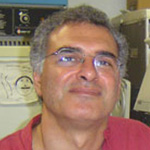
Shaker Chuck Farah is Professor at the Deptartamento de Bioquímica, Instituto de Química , Universidade São Paulo in São Paulo, Brazil. His main interests lie in trying to understand the structural basis of complex bacterial behaviors such as motility, competition and signaling. His biological model is the phytopathogen Xanthomonas citri, that causes citrus canker disease. His work combines techniques of structural biology, spectroscopy, fluorescence microscopy, production of gene knockouts, enzymology and the analysis of protein-protein interaction networks.
Instituto de Biología Molecular y Celular de Rosario IBR (CONICET - Universidad Nacional de Rosario), Rosario, Argentina http://www.ibr-conicet.gov.ar/
Alejandro J. Vila, vila@ibr-conicet.gov.ar

Alejandro J. Vila is Professor at Instituto de Biología Molecular y Celular de Rosario (IBR). He heads the Metalloproteins Laboratory. Our group carries out an interdisciplinary study, using techniques of molecular biology, biochemistry, structural biology classic (x-ray diffraction), spectroscopy (absorption, fluorescence, nuclear magnetic resonance, Dichroism circular) among other techniques, and modern enzymology (fast mixing and steady-state kinetics). In addition, we employ evolution directed in vitro as a means to predict the evolution of proteins under study.
The research that is carried out in our laboratory deals with three main areas of interest: the characterization of metallo-β-lactamases, zinc enzymes of pathogenic bacteria that are involved in the resistance to β-lactam antibiotics, the characterization of copper proteins involved in cellular respiration, and the characterization of membrane proteins involved in the mechanisms of resistance to antibiotics polymyxins.
Instituto Aggeu Magalhães, Fundação Oswaldo Cruz, IAM- FIOCRUZ, Recife, Brazil
Isabelle Viana, Roberto Lins Neto, isabelle.viana@cpqam.fiocruz.br and roberto.lins@cpqam.fiocruz.br

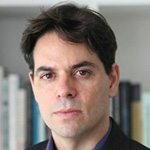
Isabelle Viana is a Researcher at Fundação Oswaldo Cruz (FIOCRUZ), Instituto Aggeu Magalhães, and ZIKAlliance Center Coordinator. Her work portfolio lies on the design and characterization of proteins, through the use of computational chemistry, structural bioinformatics, molecular biology and biophysical tools. Current interests address biomedical applications, more specifically rational design of conformation-based epitopes, epitope presentation and antigen-antibody interaction issues.
Roberto Lins Neto leading research lines consist in the application of computational methods of classic nature for the structural and functional characterization of biomaterials; protein engineering, as well as in the development of parameters for molecular simulation (force field), which are distributed as an integral part of three programs of chemistry/computational Biophysics widely used by the community scientific.
Centro Nacional de Biotecnología, Consejo Superior de Investigaciones Científicas, CNB-CSIC, Madrid, Spain
https://www.cnb.csic.es/index.php/
Jose-Maria Carazo carazo@cnb.csic.es
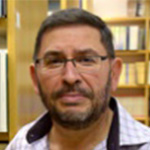
Jose-Maria Carazo is the head of the Biocomputing Unit (BCU) of the National Center for Biotechnology / Instruct Image Processing Center (I2PC), and works in the area of cryo Electron Microsscopy.
Professor Carazo has a sustained experience in the field of Three-dimensional Electron Microscopy under cryogenic conditions (cryo-EM), especially in the methods development area. His laboratory has opened whole new areas in the field, naming just as example the recent successful family of Maximum Likelihood algorithms (developed in Madrid from 2007 to 2011) or the very much used EMDataBank (started from the European Union Bioimage project that he Coordinated from 1996 to 1999).
At the level of software developments, we develop and support software packages like Xmipp and Scipion, which have been downloaded from close to 3500 individual IP addresses in the las two years, as well as web services, like 3DBionotes, with more than 2000 different users. Note that the specific version of Scipion developed for cryo-EM facilities is currently being at the heart of some key resources, such as Diamond/eBIC, in Oxford, the ESRF, in Grenoble or SciLab, in Stockholm.
Facultad de Ciencias Exactas y Naturales, Universidad de Buenos Aires, FCEN- UBA, Buenos Aires, Argentina
Darío Estrin, dario@qi.fcen.uba.ar
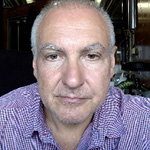
Darío Estrin is a Research Staff of National Research Council of Argentina (CONICET) and full professor of the University of Buenos Aires. He is the head of the Molecular Modeling Group at the Institute of Materials, Environment and Energy (INQUIMAE). He has a wide experience in development and validation of computer simulation techniques of biomolecules, in particular, classical atomistic and multi scale quantum-classical (QM-MM) techniques applied to investigate chemical reactivity in complex environments, such as solutions, metallo proteins and redox biochemistry.



